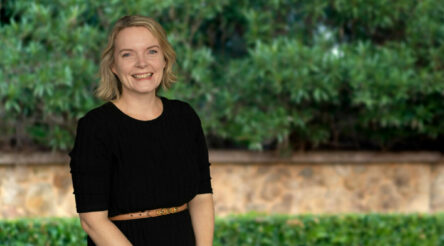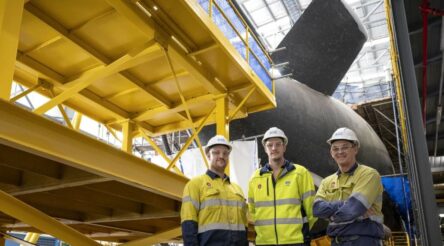Sun Cable sticks with its knitting as Cannon-Brookes prevails

Tech billionaire Mike Cannon-Brookes has prevailed over mining tycoon Andrew Forrest in their battle to control the future direction of the ambitious Sun Cable renewable electricity in the Northern Territory.
The two originally shared the same vision for the $30 billion project – the largest investment in revewable energy in the world.
It was to have included a 12,000 hectare solar farm in the Northern Territory, a massive 40 gigawatt hour battery for electricity storage, and the world’s longest undersea electric cable to Singapore via Darwin.
However the project went into voluntary administration when the partners fell out – Forrest wanted to divert the project to supplying local onshore green hydrogen production.
A months-long contest to acquire the collapsed project ensued.
In a statement on Friday afternoon, FTI confirmed Sun Cable had entered into an asset sale agreement with Helietta Holdings, which is linked to Cannon-Brookes’ Grok Ventures, to acquire Sun Cable’s assets.
Cannon-Brookes described the deal as a ‘big step in the right direction’ for Sun Cable.
He said: “We’ve always believed in the possibilities Sun Cable presents in exporting our boundless sunshine, and what it could mean for Australia.
“It’s time to stretch our country’s ambition. We need to take big swings if we are going to be a renewable energy superpower. So swing we will.”
The transaction should allow for unsecured creditors of Sun Cable to be paid in full, FTI Consulting said.
“The buyer’s intention is to continue to progress the Australia-Asia Power Link (“AAPowerLink”) project to a Final Investment Decision with Stage 1 to deliver 0.9GW of generation into Darwin and 1.8GW into Singapore.
“The Administrators will work with the buyer to facilitate ongoing development of AAPowerLink in the period up to completion.”
The project is expected to take six to seven years to complete.
Further reading:
The A$30 billion Sun Cable crash is a setback but doesn’t spell the end of Australia’s renewable energy export dreams
Picture: 5B
Topics Manufacturing News Technology
@aumanufacturing Sections
Analysis and Commentary Awards Defence Manufacturing News Podcast Technology Videos










